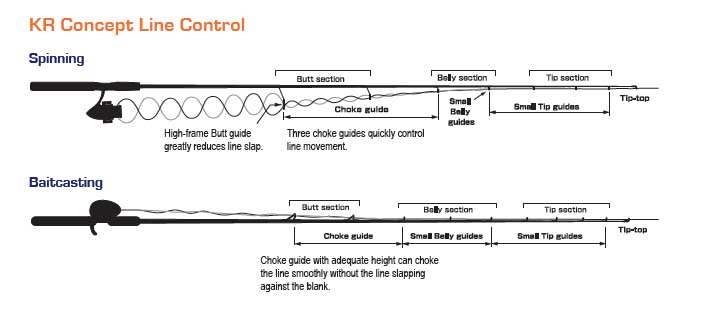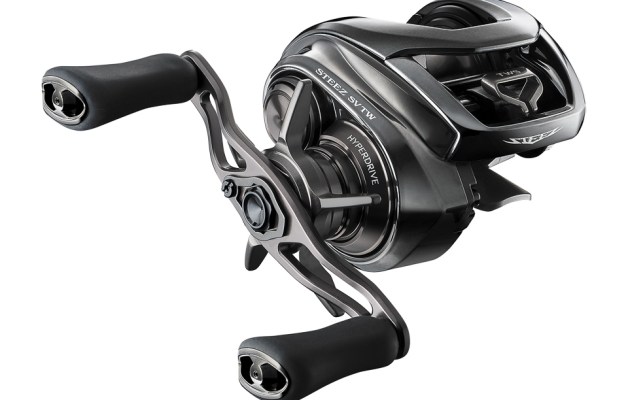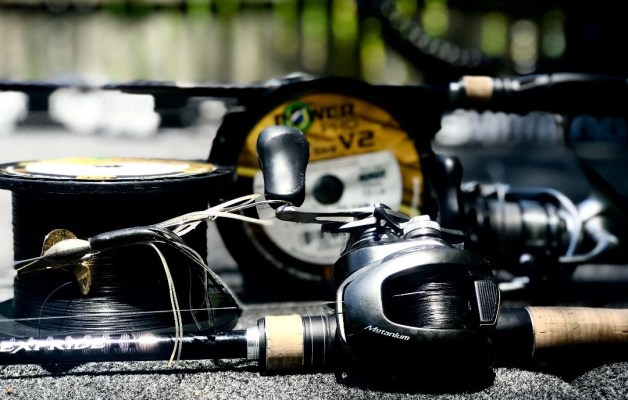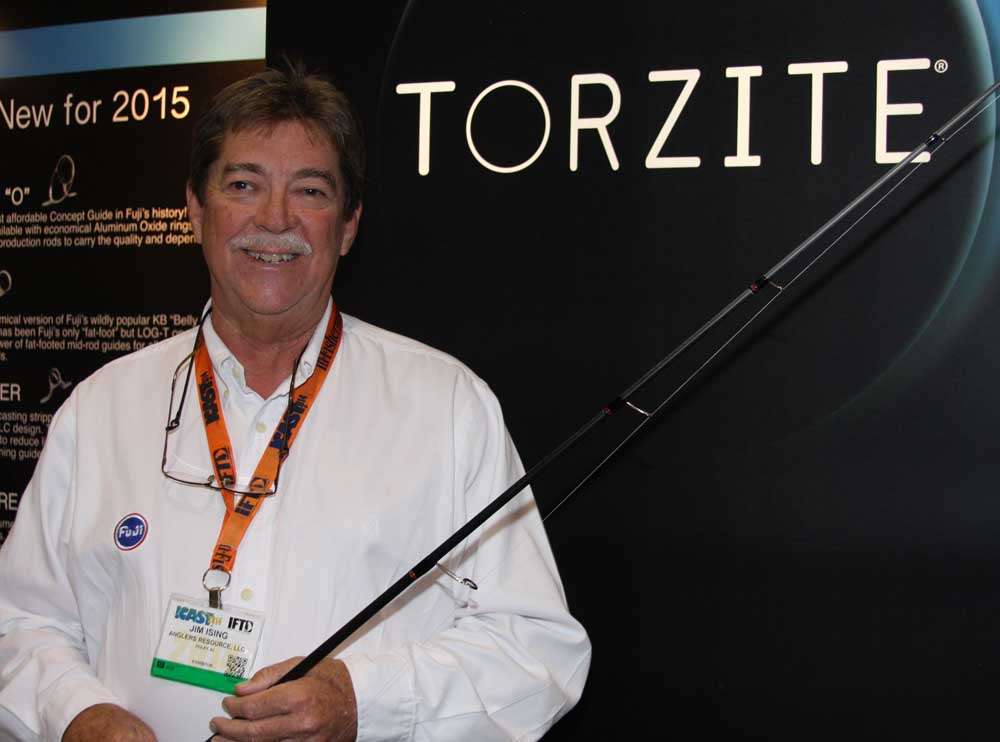
The problem with ICAST is that there’s simply not enough time to see everything. So when Elite pro Bernie Schultz stopped me at the show and said, “Ken, you have to see this!” I followed. He took me to the Fuji booth.
Since the 1970s, fishing rods (and most particularly bass fishing rods) have been getting longer, lighter, stronger and more sensitive. It’s been mostly an incremental evolution with occasional leaps in attitude and technology as techniques, materials and engineering have changed. Through it all, Fuji has been in the vanguard of these efforts. In particular, there are almost certainly more Fuji guides on bass rods than those of all other manufacturers combined.
Jim Ising is the marketing director of AnglersResource, the North American distributor of Fuji rod components and a man who has been involved directly with Fuji design engineers for the past 4 years. According to Ising, Fuji’s new guide train technology is the most important step in over 30 years.
The Basics
Let’s start simply. The “guide train” is the full complement of line guides on a rod — from the stripper (or butt) guide nearest the reel to the tip-top guide on the end. For most of fishing’s history, if you put them on in a straight line you were doing all that was expected of a top-notch rod maker (though some prefer a spiral wrap, but that’s another story for another day). Today, Fuji is doing much better than merely putting the guides on straight — they’re redefining how guides work on a fishing rod.
“Fuji has 11 engineers working at an indoor casting range in Japan,” Ising says. “By keeping it indoors and removing the elements that typically interfere with casting —like wind — engineers are able to collect precise data on performance. Modern technology is teaching us a lot about how guide size, position and height impact a rod’s efficiency and performance. In the past three or four years we’ve learned more about performance than in the previous few decades combined. Now, the company is poised to take a giant step forward that may ultimately impact the entire rod industry.”
With the advent of micro guides a few years back, researchers learned that small guide ring diameters actually increase casting distance. Carrying this knowledge further, engineers began experimenting with smaller guide ring diameters on the traditional big-ringed butt guides used on spinning rods. They were able to document huge gains in performance using smaller rings in higher frames. Using a higher frame fitted with a smaller ring is a relatively new issue, allowing faster control of line coils from the reel and smoother, longer, more accurate casts. The principles hold true for both spinning and casting rods, allowing a controlled flow of line along the rod much earlier in the guide set-up.
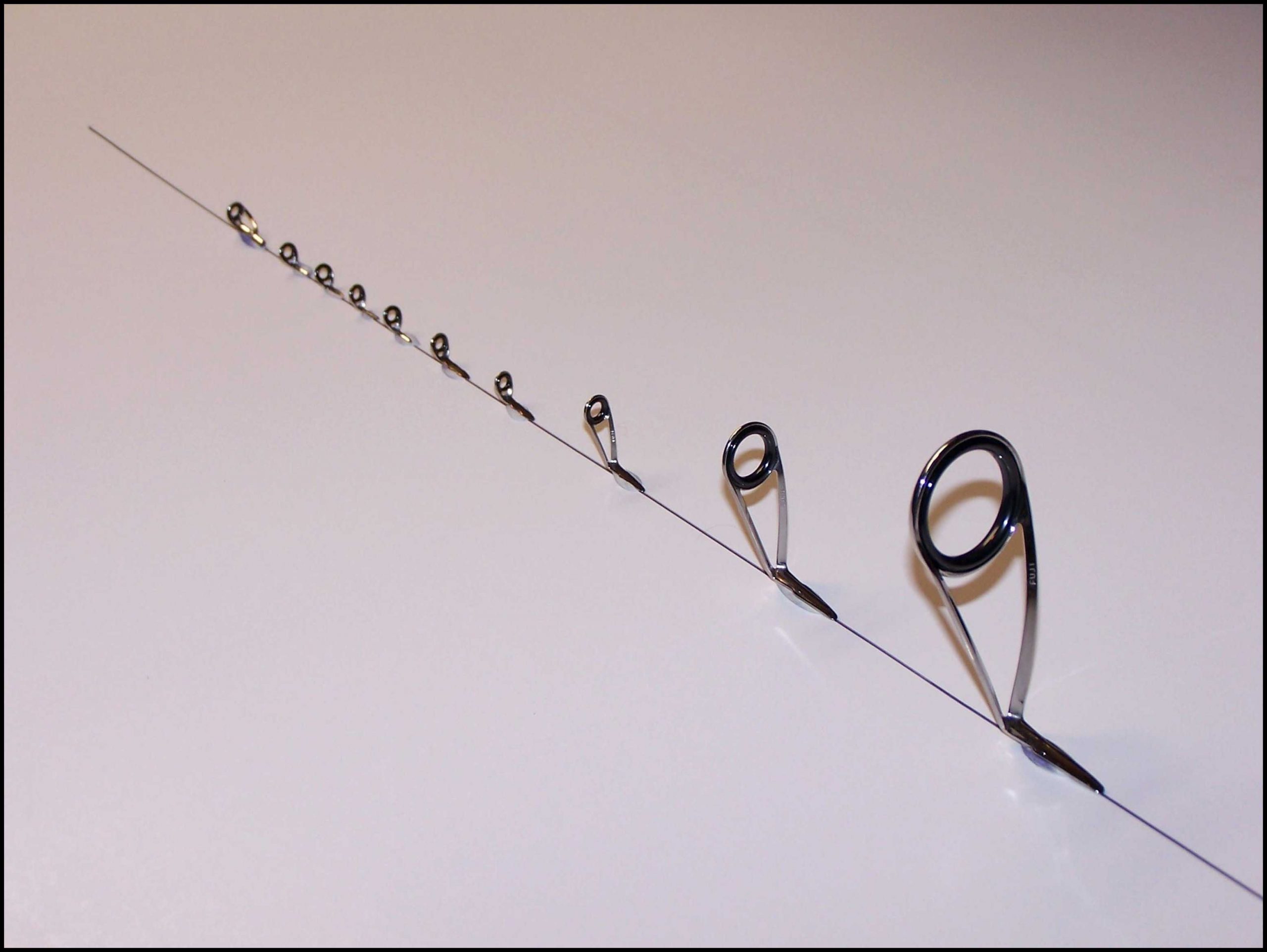
Fuji has discovered that guide height and ring size combine as a critical component of an efficient rod —one that reduces friction and maximizes the energy exerted in the cast. Greater efficiency means longer, smoother casts and a better experience for the angler.
Whereas guide height used to be determined by guide ring size (the bigger the ring, the taller the frame), Fuji is now offering a complete selection of high-frame, small-ring guides to take advantage of these recent discoveries.
Sighting Up
If you look down the blank of a quality casting or spinning rod, all of the guides line up like little soldiers ready for battle, and if you look through the guide rings on a spinning rod, you can probably see the gradually reducing diameter of the rings down to a point on the rod known as the “choke point.”
Glance down the guide rings of a modern rod configured by Fuji and it looks as though you’re staring at a bull’s-eye. Not only are the rings gradually reduced in diameter (and much more quickly than on a conventional rod), but they’re centering on each other as well. Think of the bull’s-eye on a shooting range target and you get the idea. The outer ring is the stripping guide and the center of the bull’s-eye is the choke point. Lining them up that way leads to faster line control and allows smaller running guides to carry fast-flowing line more efficiently through the tip guide.
“The stripping guide on one of our new guide trains is the first ‘control’ point,” Ising explains. “It’s bigger than the other guides, but a little smaller than what you’d find on most standard spinning or casting rods. From there the line continues to pass through the reduction train in a smooth, straight path all the way to the tip.
“Every time line runs through a guide ring there is some energy loss due to friction. The faster you can control the line and remove the ‘chaos’ or ‘chatter’ of it moving around, the longer and smoother your cast will be. That’s why the sum total of energy loss through small guides (like micro guides) is less than through traditional larger rings.”
Because the way line comes off casting and spinning reels is very different, guide trains need to be constructed differently for casting and spinning rods. On a revolving spool (casting) reel that creates less chaos and chatter, it takes just one guide ring of proper height to “choke” the line and effectively funnel it to the smaller rings. But on a fixed spool (spinning) reel where chaos and chatter are more extreme, three gathering (or “reduction”) guides are required.
Other Benefits
If longer, more efficient casting weren’t enough, Ising says there are other benefits of the new guide train technology for anglers.
“As guide trains get lighter and more efficient, rods get lighter,” he says, “and you retain more of the original action of the blank. Lighter guides mean the rod can recover more quickly, offer more sensitivity, respond faster to hook sets and reduce fatigue in a day of fishing. I’ve had people tell me it’s just more fun to fish with rods like this.”
The new Fuji guides and guide train technology are available now, but it might take a while before you start noticing them on the blanks of your favorite rod manufacturers. It takes time for even the best ideas and technology to catch on … but eventually it does.
